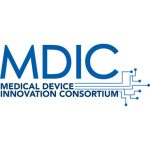Consider the example of home-use ultrasound. Recently, MIT Technology Review reported that a vascular surgeon used a hand-held ultrasound scanner connected to an app to diagnose his own cancer.8 Though not a cancer specialist, when suspicious images appeared on the app’s readout, the doctor recognized them as a telltale sign of the disease. He is quoted in the article as saying, “I was enough of a doctor to know I was in trouble.” But, what of the layperson user? Would a layperson be able to operate the device just as effectively and safely? Within the last year or so, industry media outlets have reported on advancements in this technology that will soon enable ultrasound to be used at home. This particular manufacturer reportedly has plans to put this technology into the hands of the layperson in the near future. It seeks to combine the device with artificial-intelligence software “that could help a novice position the probe, collect the right images, and interpret them. By next year, it believes, its software will let users automatically calculate how much blood a heart is pumping, or detect problems like aortic aneurisms.”9
The home-use ultrasound has all of the hallmarks that distinguish “new” home-healthcare products from traditional home-healthcare products. It is a software-driven product that requires sophisticated interaction between the patient and the device. It is a product that was designed for use by medically-trained professionals but is being adapted for use by laypersons. Quite literally, it puts technology that was formerly only in the hands of healthcare providers into the hands of laypersons. It is intended to be used apart from a healthcare provider; that is, for use outside the presence of a trained medical professional. Together, these elements combine to empower patients and enable them to interact with technology in new ways. While much good can come from making patients more involved in their own care, there are risks as well. Namely, we should expect that interactive technology coupled with at-home use will make self-diagnosis a common problem, as we ask patients to participate more actively in their own care while removing health care providers, geographically speaking, from treatment. Relatedly, this dynamic suggests that medical errors (such as misdiagnosis) may not be addressed until underlying health conditions have progressed further, becoming more serious and possibly causing greater physical damage to patients compared to when treatment is provided in traditional clinical settings.
Traditional home-healthcare products are not associated with these pitfalls. At the same time, however, the new home-healthcare technologies are susceptible to some of the same problems that manufacturers of traditional home-healthcare products have struggled with for decades.
Learning from Traditional Home-Healthcare Products. Considering the factors that typically contribute to the risk profiles of traditional home-healthcare products, some “big picture” concerns emerge. Among them are the design challenges associated with creating products that function safely and effectively outside of the clinical setting. The clinical setting is a controlled, uniform, and consistent environment. Most clinical settings strongly resemble each other, as requirements for sanitation, infrastructure, and utilities are the same across facilities. It is far easier to design a product for that environment, because the conditions under which the product will be used are predictable. On the other hand, there is no “one” home environment. In fact, the term “home healthcare” when applied to these products is a misnomer. Medical devices are used not only in homes, but also in schools, public spaces, recreational venues, etc. A home-healthcare device must operate effectively and safely in a variety of home environments as well as these other diverse forums. This can be challenging for medical-device designers, and home-use devices often are not capable of adapting to the complex and varied conditions of non-clinical settings.
Historically, some manufacturers of home-healthcare products have stumbled when developing product safety information for laypersons, such as patients or care providers who do not have medical training. In general, product safety information, as I am using the term, includes such things as warnings, instructions for use, and labeling. When done well, this information guides the user through the safe and effective operation of the product. However, when not done well, deficiencies in this information can cause injury to patients and give rise to products liability. Unfortunately, poor quality product-safety information is often associated with home-healthcare products. Quite simply, this is because it is hard to develop product safety information for this type of product. It is much easier to develop product safety information for devices operated by trained healthcare providers, who share an educational background and vocabulary, than it is to develop product safety information for a heterogeneous population of laypersons, who are diverse in their educational backgrounds, abilities, and challenges. As a result, home-use devices are particularly prone to failure-to-warn claims.
Managing the Risks Associated with Software-driven Medical Devices Used in Non-clinical Settings
What can a manufacturer of a software-driven home-healthcare product do to make the device safer and mitigate associated risks? It is important to design a risk management strategy that takes into consideration the unique risks of a particular product; however, there are some general, guiding principles that I recommend to companies that are developing software-driven home-healthcare products.
Test Software in Real-World Conditions. FDA has issued several guidance documents related to software. Cyber risks, software-related information in product approvals, and the use of off-the-shelf (OTS) software in devices are among the topics they cover. The one guidance document that most directly addresses software testing was issued in 2002, and it concerns software validation systems. In general, “validation” determines whether a process or function returns the same results over time. So, a software validation system is used to determine through objective evidence whether software consistently performs as intended ─ a topic relevant to product safety but merely the tip of the iceberg when it comes to addressing risks that arise from software in home-healthcare products.








